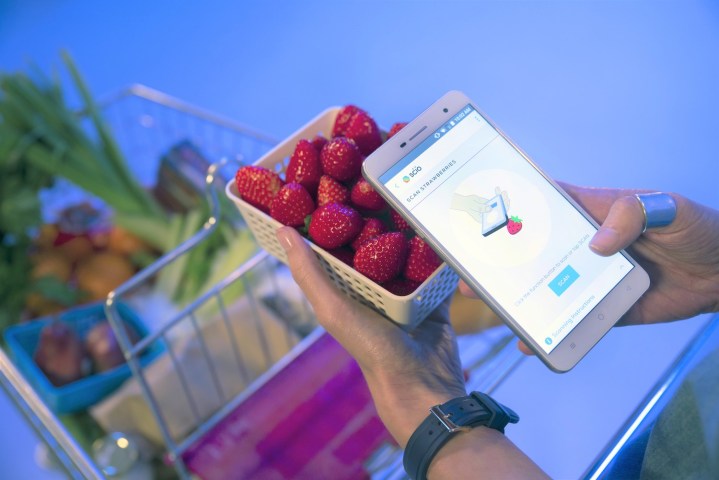
Spectrometers work by sending out a pulse of near-infrared light that causes materials in an object to vibrate. From the returned light, the exact material composition of an object can be obtained. The company first debuted similar technology in 2014, which it plans to launch in the form of a handheld called the Scio sometime in 2017 for $249.
The H2 is essentially the same thing but built into a smartphone. The device will also launch this year, however, immediate details on exact availability and pricing have not been announced. Regardless, it almost feels like the idea of the tricorder from Star Trek is ever closer to reality.
There are several different possible uses for this type of technology. Athletes could use it to scan themselves to figure out body fat percentage, while concerned individuals could use it to scan for the nutritional content in food and drink. Even another compelling use could be to scan objects to verify authenticity — preventing you from purchasing a rip-off.
“Just as the smartphone put the power of the internet and a vast knowledge base into our pockets, this innovation will put the capability to learn about the chemical and molecular makeup of materials into the public’s hands,” Consumer Physics CEO Dror Sharon says. “This is the next leap forward not just for mobile phones, but for all sorts of connected devices. The Changhong H2 and smartphones are only the beginning.”
On its own end, Changhong says it is committing to the development of a wide series of applications for the H2, as well as assisting third-party developers in creating their own. A software development kit is planned for later in 2017, according to a statement. The H2 is the culmination of about a year’s work with Consumer Physics as well as semiconductor manufacturer ADI to shrink the Scio molecular sensor into something that could fit inside a smartphone.
While the H2 will provide powerful functionality that is so far unique to the device, Changhong says power efficiency was a key focus for developers. At launch, the H2 will be about 20 percent more power efficient than regular smartphones.
Editors' Recommendations
- Motorola’s ThinkPhone is the coolest phone of CES 2023 — but you can’t buy it
- Here’s every Alexa Built-in phone that can access Amazon’s assistant on the move


